Lake Victoria | Africa’s largest
Lake Victoria | Africa’s largest : Having an area of approximately 59,947km2 makes this lake the Africa’s largest by area. It actually gets most of its water from rainfall and a number of tributaries specifically river Akagera in Rwanda and drained by River Nile whose source is in Jinja. The lake is generally shared by Uganda, Kenya, and Tanzania. Uganda taking 45% of the lake, Kenya 6% and finally Tanzania with 49%.
 This lake was known as Nalubaale by the Ugandan locals who lived around which meant “home of the gods”. On the other hand, it was known Nam Lowe by the Luo people which meant “body of endless water”. Although this lake had its name(S), European explorer John Speke decided to name it Lake Victoria after discovering the the source of River Nile. He named it after the Queen of England at that time and the name carried on and is still being used to identify this lake up to date.
This lake was known as Nalubaale by the Ugandan locals who lived around which meant “home of the gods”. On the other hand, it was known Nam Lowe by the Luo people which meant “body of endless water”. Although this lake had its name(S), European explorer John Speke decided to name it Lake Victoria after discovering the the source of River Nile. He named it after the Queen of England at that time and the name carried on and is still being used to identify this lake up to date.
Formation of Lake Victoria
The lake was formed when westward flowing rivers were dammed by an up thrown crustal block. In fact, this has raised several questions about the true source of River Nile and the rift valley formation that experts are still trying to figure out the answers to.
The fish species
This lake is believed to be approximately 400,000 years old and harbors around 1000 islands and populated with over 500 fish species. These include; the Cichlids, African catfish, Elephant fish, African tetras, Tilapia, Lungfish, etc. However, the introduction of Nile perch into the lake reduced the population of the other fish species to nearly extinction. Apart from the fish, a legendary creature was also believed to be a habitant in these waters. It was said to capture fishermen and their boats if they sailed too far into the lake. It was named “Lukwata” following its actions as the Luganda word “kukwata” literally meaning “to catch”.
Did you know?
- The lake gets 80% of its water from the rain.
- It is the principle source of the Nile River which drains at about 15%.
- It is one is one of the two places in East Africa where it’s possible to watch the sunset over water without being at the coast.
What to do on Lake Victoria
Fishing
Africa’s largest freshwater lake supports Africa’s largest inland fishery, with the main catch of fish being the Nile perch introduced in the lake in the 1950s. Besides, seining and Gill netting are the most prominent fishing methods used on this lake. Other methods include; the long lines, mid-water seines and many others.
Bird watching
Bird watching on Lake Victoria has greatly become a popular activity for both National and International bird watching tourists. This lake is enriched with a variety of bird species and these include; the African fish eagles. Pelicans, kingfishers, ducks, plovers, black crakes, marsh harriers, goose, jacanas, bee-eaters, sunbirds, etc. This activity will also take you around different islands of Lake Victoria like the Ngamba Island and Ssese Island. You will ride on an engine-powered canoe accompanied with an experienced local guide.
Boat rides or cruising
During this activity you will spot water animals like the Nile crocodiles, turtles, hippopotamu, spotted-necked otters and carnivorous monitor lizards. On the tree tops, you will be able to spot the African fish eagle perched majestically on the tree as well as other bird species.
Equator experiences
As a matter of fact, Lake Victoria touches the Equator in its northern side. It covers a total area of 68,800 square kilometers (km2) and with a maximum depth of 80m it is relatively shallow. Here, you will experience different experiments like the boating standing still in one position. More so, during swimming one feels different forces within the waters though this needs an experienced swimmer to compete with the forces.
Sunset cruises
This is generally the second largest fresh water lake in the world offering sunset cruises. In Uganda, these occur in Entebbe late afternoon towards the equator line or local islands on boat. While here, you will have an opportunity to view the sun over the horizon. You will also enjoy bird watching and as well as fishermen as they cast their nets. This is basically done while enjoying the snacks and drinks provided on board.
Attractive sights along the lake include;
Ssese islands
These are a series of eighty-four islands in the northwestern part of Lake Victoria in Uganda the pearl of Africa. The islands adjoins with Kalangala district and they don’t have any territory on mainland. The islands are also home to a variety of animal and bird species that are not easily spotted on the mainland. In fact, this leads to the growth of the tourism industry on the islands. The islands consists of activities like fishing, agriculture, livestock farming, forestry, tourism, etc.
Ngamba Island Chimpanzee Sanctuary
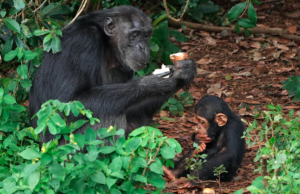 This island is a home to over 40 confiscated and orphaned chimpanzees, rescued from pet and bush meat trade. It is surrounded by peaceful waters of Lake Victoria in the south Eastern part near Koome district in Uganda. It was founded in 1998, offering 95 acres of natural forest where chimps roam freely carrying out their daily activities. Here, chimps have freedom to stay in the forest at night or return to nighttime enclosures where they build nests. They receive an evening meal, and their diet consists of supplying meals multiple times per day.
This island is a home to over 40 confiscated and orphaned chimpanzees, rescued from pet and bush meat trade. It is surrounded by peaceful waters of Lake Victoria in the south Eastern part near Koome district in Uganda. It was founded in 1998, offering 95 acres of natural forest where chimps roam freely carrying out their daily activities. Here, chimps have freedom to stay in the forest at night or return to nighttime enclosures where they build nests. They receive an evening meal, and their diet consists of supplying meals multiple times per day.
Mabamba bay swamp
The swamp is generally a wetland situated in the northwest of Entebbe on Lake Victoria. It is also a birder’s destination to over 260 bird species. These include; the white winged terns, African fish eagle, rare shoebill, kingfishers, papyrus Gonolek. Weavers, sunbirds, bee-eaters, squacco heron, common cormorants, etc. In fact, these can be spotted using small engine-powered canoes along side experienced local guides.
Uganda Wildlife Educational Centre (UWEC)
Also known as the zoo nestled at the shores of Lake Victoria, it is a place where animals are caged for research and study purpose. It was established in 1951 as a sanctuary for wildlife which were be unable to fend themselves in the wild. It also offers the best introduction to Uganda’s flora and Fauna in National Parks. Residents include; lions, tigers, cheetahs, leopards, white rhinos, primates and bird species like the rare shoebill, etc.
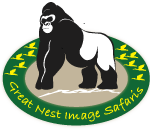

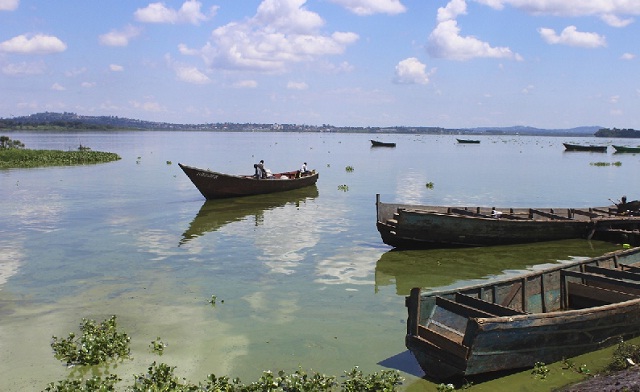
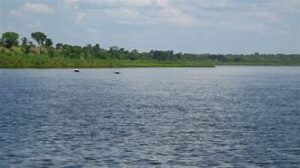 How deep is Lake Kyoga?
How deep is Lake Kyoga?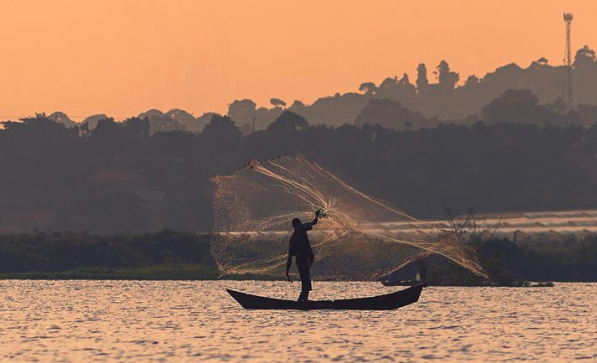
 Pin-tailed whydah, Yellow-browed camaroptera, Common waxbill, Marico sunbird, Tree pipit, Grosbeak weaver. Blue-breasted bee-eater, Cape wagtail, Africa wattled lapwing, Senegal lapwing, Yellow-throated longclaw. White-headed saw-wing, Broad-billed roller, White-browed and the Brown-backed scrub-robins. Whiskered tern, Lead-coloured flycatcher, African green pigeon, Sooty chat, Plain-backed pipit, Tropical Boubou, etc.
Pin-tailed whydah, Yellow-browed camaroptera, Common waxbill, Marico sunbird, Tree pipit, Grosbeak weaver. Blue-breasted bee-eater, Cape wagtail, Africa wattled lapwing, Senegal lapwing, Yellow-throated longclaw. White-headed saw-wing, Broad-billed roller, White-browed and the Brown-backed scrub-robins. Whiskered tern, Lead-coloured flycatcher, African green pigeon, Sooty chat, Plain-backed pipit, Tropical Boubou, etc.  The migratory species come from as far as Liberia and cross over into East Africa landing at the shores of
The migratory species come from as far as Liberia and cross over into East Africa landing at the shores of 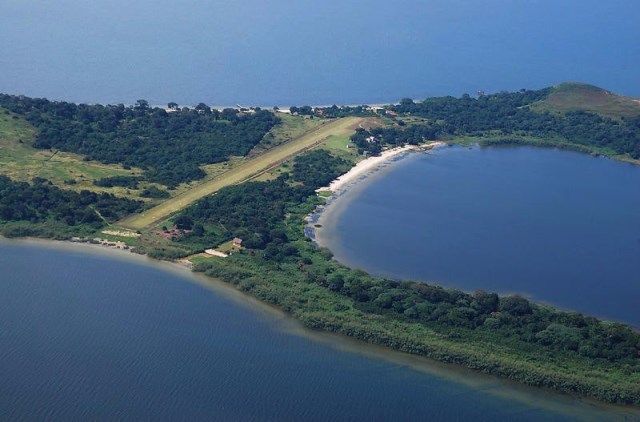
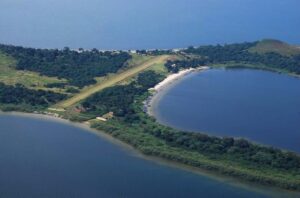 In fact, the eastern shores are covered with grasslands and the Island is all about enjoyment and relaxation. It also offers brilliant lake side views, sunbath and perfect for water sports like jogging around the island. Besides, you can also enjoy horse-riding and hiking trails are also an excellent base for bird-watching. The island is comprised of beautiful soft white sand and several resorts but one that stands out is the Pineapple Bay resort. In fact, it is the most beautiful resort on this Island, making it a perfect vacation spot for weekend gateways.
In fact, the eastern shores are covered with grasslands and the Island is all about enjoyment and relaxation. It also offers brilliant lake side views, sunbath and perfect for water sports like jogging around the island. Besides, you can also enjoy horse-riding and hiking trails are also an excellent base for bird-watching. The island is comprised of beautiful soft white sand and several resorts but one that stands out is the Pineapple Bay resort. In fact, it is the most beautiful resort on this Island, making it a perfect vacation spot for weekend gateways.
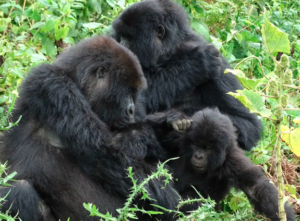 The COVID 19 pandemic has separated the whole world into two batches of people; the vaccinated and the ones who are not vaccinated. However the requirements to travel to
The COVID 19 pandemic has separated the whole world into two batches of people; the vaccinated and the ones who are not vaccinated. However the requirements to travel to 
 Uganda
Uganda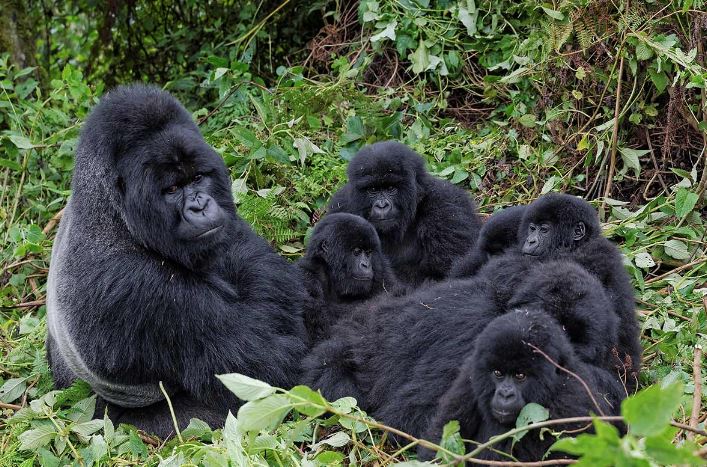
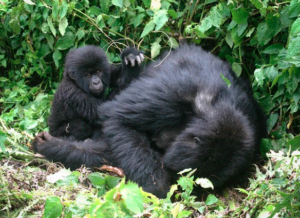 These families include; Bushaho and Bikingi gorilla groups within
These families include; Bushaho and Bikingi gorilla groups within 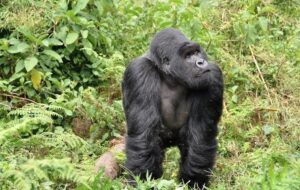 The habituation exercise or process involves trekking a selected family of wild gorillas which are not yet familiar with human encounters. However, the exercise is not a one day activity but done for more than one day over period of about 3 to 4 years. As the process goes on, the different members of a mountain gorilla family under study are given identity. This is based on their gender or sex as well as age and size. As time goes on, the
The habituation exercise or process involves trekking a selected family of wild gorillas which are not yet familiar with human encounters. However, the exercise is not a one day activity but done for more than one day over period of about 3 to 4 years. As the process goes on, the different members of a mountain gorilla family under study are given identity. This is based on their gender or sex as well as age and size. As time goes on, the
 It is alleged that a young pregnant lady was brought to the top of the cliff to be pushed down the waterfalls as usual. Little did they know she had a plan, when the brother and father pushed her. In the process, she held unto them and the three fell to their death. Later, the practice was stopped because they realized more girls would pull their brothers or fathers down the same path.
It is alleged that a young pregnant lady was brought to the top of the cliff to be pushed down the waterfalls as usual. Little did they know she had a plan, when the brother and father pushed her. In the process, she held unto them and the three fell to their death. Later, the practice was stopped because they realized more girls would pull their brothers or fathers down the same path.
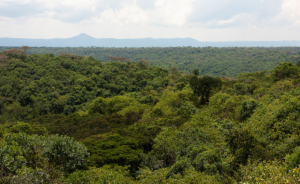 Additionally, a view point was constructed where you will be able to see bats and big pythons that live in here. Some of the primates here include; vervet, colobus, red-tailed monkey, L’Hoest monkeys and baboons. Animal species include; the giant forest hog, African buffaloes, pygmy antelopes, etc. Bird species include; the white napped pigeon, Rwenzori Turaco, forest flycatcher, red tailed bristle, among others.
Additionally, a view point was constructed where you will be able to see bats and big pythons that live in here. Some of the primates here include; vervet, colobus, red-tailed monkey, L’Hoest monkeys and baboons. Animal species include; the giant forest hog, African buffaloes, pygmy antelopes, etc. Bird species include; the white napped pigeon, Rwenzori Turaco, forest flycatcher, red tailed bristle, among others. 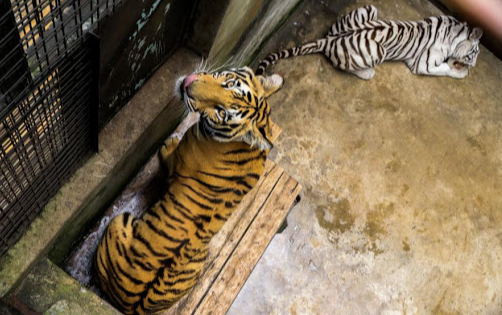
 The male and female tigers aged two and three months were flown into the country from South Africa on 7th March 2020. In fact, the pair has ever since been undergoing institutional quarantine and medical examination until they were deemed fit to occupy their holding facility. Dr. James Musinguzi UWEC Executive Director noted that
The male and female tigers aged two and three months were flown into the country from South Africa on 7th March 2020. In fact, the pair has ever since been undergoing institutional quarantine and medical examination until they were deemed fit to occupy their holding facility. Dr. James Musinguzi UWEC Executive Director noted that 




